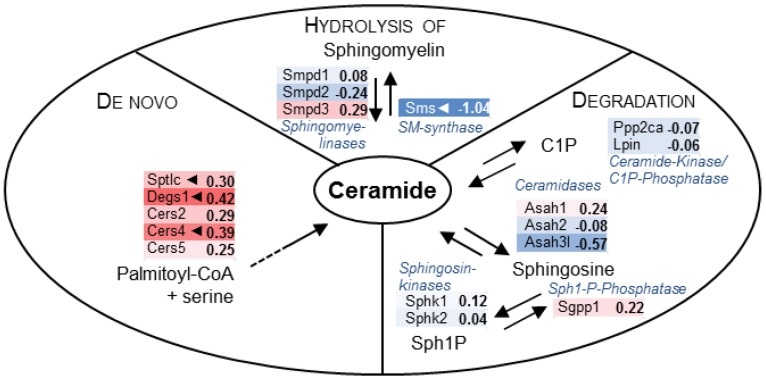Figure 6.
Ceramide metabolism in desipramine-pretreated mice undergoing septic cardiomyopathy. Data of transcripts related to biosynthesis and metabolism of ceramide were extracted from micro array experiments for schematic depiction of gene expression changes comparing mice with polymicrobial sepsis with subsequent cardiac dysfunction. Desipramine pretreatment not only resulted in inhibition of rapid and transient ceramide generation by acid sphingomyelinase Smpd1, but also in blockade of metabolism by ceramidases (Asah1, Asah2, Asah3l), which were all moderately down-regulated. The increase of ceramide levels could also be controlled by an up-regulation of transcripts related to de novo synthesis of ceramide: three ceramide synthases (Cers2, Cers4, Cers5) were found to be up-regulated. Interestingly, the desaturase Degs1 catalyzing the last step in the ceramide biosynthetic pathway and a catalytic subunit of the rate limiting enzyme serine-palmitoyl transferase (Sptlc) were also significantly up-regulated. Development of ceramide overload might also be affected by strong and significant down-regulation of sphingomyelin synthase (Sms). Transcripts encoding enzymes for the metabolism of sphingosine (sphingosine kinases Sphk1/2 as well as sphingosine-1-phosphate phosphatase, Sgpp1) were unaffected. There was also no change in transcript levels of enzymes regulating (de-)phosphorylation of ceramide (Ppp2ca, Lpin). Change of expression level is represented by a color code (blue down-regulation, red up-regulation), significant changes are indicated by an arrow (Abbreviations: C1P: ceramide-1-phosphate).

